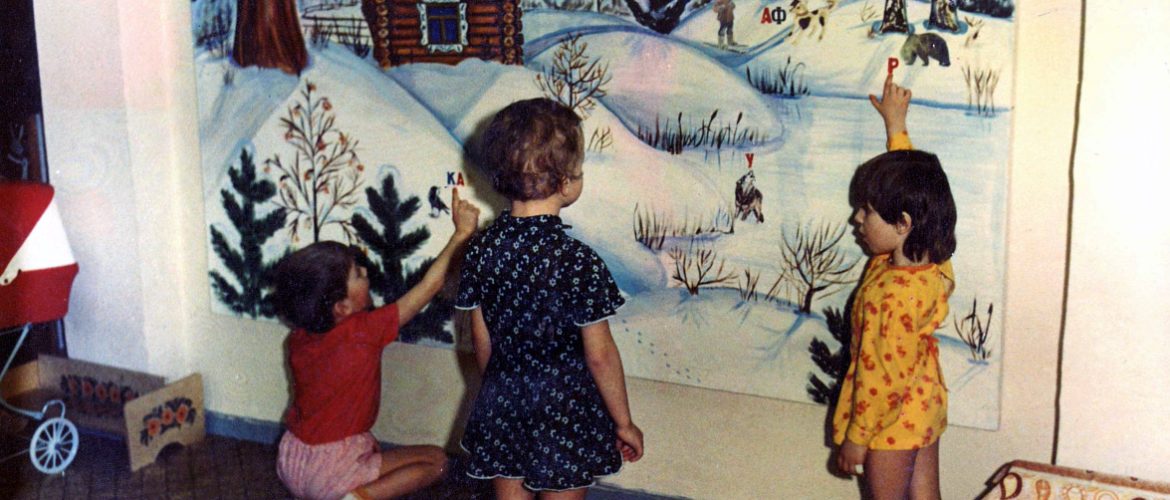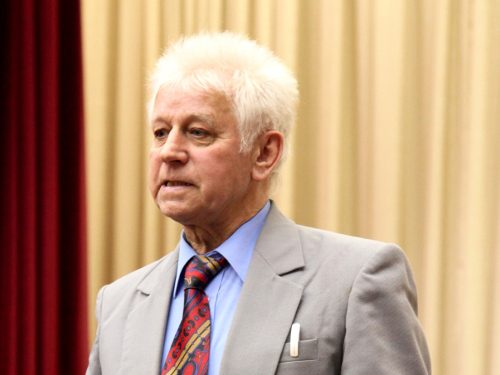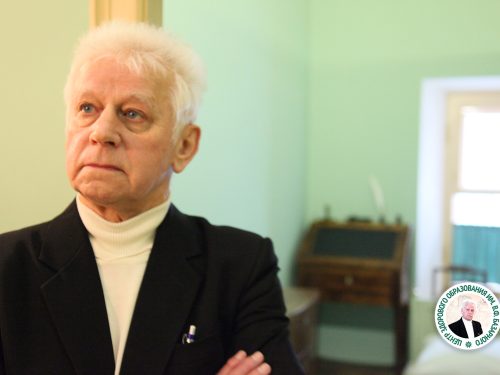PEDAGOGICAL BASIS FOR MASS DEFECTS IN VISION IN THE YOUNG GENERATION OF THE NATIVE PEOPLES
PEDAGOGICAL BASIS FOR MASS DEFECTS IN VISION IN THE YOUNG GENERATION OF THE NATIVE PEOPLES – PERSPECTIVES TO SOLVE THE PROBLEM
Institute for Medical Problems of the Northern Peoples, USSR Academy of Sciences, Siberian Department, Krasnoyarsk, USSR
8th International Congress on Circumpolar Health, Whitehorse, Yukon, May 20-25, 1990
The health potential of the Northern Native peoples of the USSR has been forged and formed for thousands of years in the most extreme environment of our planet, their vision being the very basis for their life preservation. In living conditions of this kind the quality of the gene pool has been crystallized by evolution. And this would surprise to a great extent those who have imagination and logical thinking. Its a puzzling fact, but up to 60% to 70% of the school leavers among the Native northern peoples are suffering with vision disturbances. But they used to be great snipers and hunters. What kind of destructive force has penetrated into the lifestyle of the young and growing generation?
We started to try analyzing this problem about 15 years ago. It was stated that the causes for breaking the mechanism destined to support the normal evolution of the visual system is deeply rooted in the peculiarities of conceiving the child and in those of ante- and postnatal development period. Those factors are: Alcohol addiction and tearing off the usual pattern of the diet (abrupt “European” orientation). But the vision system was most destructively influenced by the organization of the teaching process accrording to the European model, which turned out to be catastrophic for the northern Native children. For instance, it was stated that the traditional ways to transmit the information and to teach found themselves in an antagonistic contradiction with the ethno-ecological functional requirements of the developing visual system. Let’s consider and call the most important ones.
So, the contradictions are as follows:
1. Contradictions between a need of functioning in a mode of a wide panorama and distant vision on the one hand and systematic bedding classes in a mode of truncated book deadlocks which hamper the development of neurodynamic process on the other.
2. Contradictions between the prevailing sensory-visual nature of pereeptirm and thinking on the one hand, and overloading with verbal code information in the curriculum on the other.
3. Contradctions between the children’s reduced ability for visual and elemental anatysis of pluralities under tbe conditions of short range vision on tbe one hand, and overloading with this very analysis in tbe present school programmes on the other.
4. It’s a big contradiction between the reduced ability of the children for long performing of the visually controlled manual processes and overloading of the current programmes with writing.
5. It’s a contradiction between their adaptability to functioning under the extreme conditions and their high susceptibility to the prolonged effect of twinkling light.
The above mentioned etno-ecological peculiarities of perception and of thinking as well as those of actions in the system of the pre-school and school upbringing and teaching has resulted in tbe fact that tbe prevailing state observed in the children during their education is excessive general tension that includes sensory-psyihogenic mechanisms as well as motor-coordinatory and neurovegetative ones. The children’s tension is manifested by their excessive bend over the book or notebook while reading or writing.
It was established that in the course of education the degree of manifestation and prevalence of a number of school pathologies (myopia, scoliosis, cardiovascular and neuropsychic disturbances), was related to tbe degree of tbe pupil’s bend and tension.
It should be noted however that not only the schoolchildren of the northern Native peoples remain in the state of tension and abnormal postures. Therefore educators often and always keep trying their best to make the pupils sit straight, by calling them to do so. But here is just one example to illustrate the situation which could be created by such approach. In the nineteenth century special hard bars were offered to use them as a preventative from the low bend of tbe children during the classes. Those bars were placed between the pupil’s forehead and the desk. But the force that made the children bend down was too big to resist to it, and in tbe course of certain time instead of myopia and scoliosis deformity of the cranial bones emerged and developed. So, for conclusion of this example we may say that if we really consider human life and health as the top priority among other bonuses, including our own learning, we are bound to bring about a wide scope reorganization of the whole teaching process. For this purpose more than ten years ago we worked out certain energy-saving and health-preserving principles of the teaching process design which don’t require the body’s tension. With a goal of improving the effect of sensory organs functioning including the children’s coordinatory abilities a method for dynamic postures was elaborated. This method consists of the following; during the classes the children should either stand for a certain period of time or then sit. Standing is at a special land of furniture.
Certain ecological principles for designing the teaching process have been worked out as well. They are as follows:
1. A method for teaching rapid reading without a book;
2. Holding classes in a mode of visual horizons and mobile handouts;
3. Methods for establishing certain modes of the leading educational and cognitive system (the eye-hand system), including health-saving modes of introducing into writing.
For preventing the children from overstraining during the classes a system of individual and group sensory training facilities have also been proposed. They are supposed to secure the individual and group hygiene of vision.
The proposed health-saving methods for teaching have been and are being approved to a great extent in various regions of our country. It’s been shown rather convincingly that introducing such methods into practice enables decreasing the rate of school pathologies, including myopia, from 1,5 to 2,5 times. Note should be made of the fact that the system under discussion proved to be highly effective also in the framework of the ordinary secondary school for general education. It’s positive effect has been confirmed by a number of the foreign colleagues who follow the present trend. Taking into account that many highly developed nations such as the USA, Japan, Great Britain and others are troubled by the problem of the school generated kinds of pathologies; and according to the viewpoint of Professor Golt, director of Child Health Institute at the University of London, there are good reasons for bringing the results of the present work to the notice of the world at large. For our part we express our complete readiness to pass the present methods on a contractual basis to all countries concerned, as well as through UNESCO.






